
Collix is a genus of moths in the family Geometridae first described by Achille Guenée in 1857.
Collix inaequata is a moth of the family Geometridae. This moth is endemic in La Réunion where it is found in medium altitudes.
Chloroclystis inaequata is a moth in the family Geometridae. It is found in the north-eastern Himalayas and on Java and Bali.
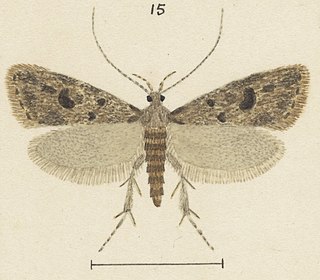
Gymnobathra ambigua is a species of moth in the family Oecophoridae. It is endemic to New Zealand. This species has been classified as critically endangered by the Department of Conservation.

Gymnobathra caliginosa is a moth of the family Oecophoridae. It was described by Alfred Philpott in 1927. It is endemic to New Zealand.
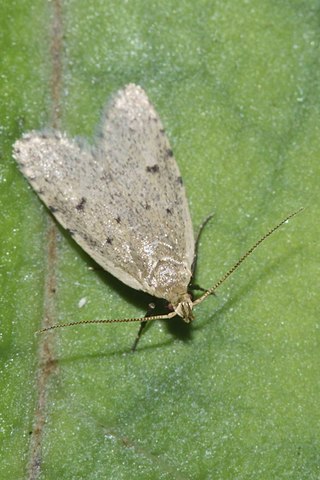
Gymnobathra calliploca is a moth of the family Oecophoridae. It was described by Edward Meyrick in 1883. It is endemic to New Zealand.
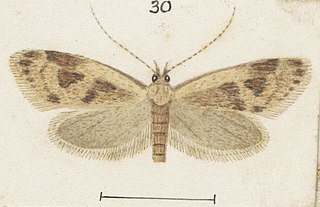
Gymnobathra cenchrias is a moth of the family Oecophoridae. It was described by Edward Meyrick in 1909. It is found in New Zealand.
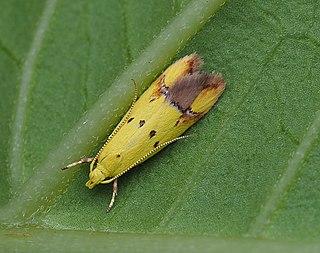
Gymnobathra flavidella is a species of moth in the family Oecophoridae. It is endemic to New Zealand. The host plants for the larvae of this species include Brachyglottis repanda and Gahnia procera.

Gymnobathra hamatella is a moth of the family Oecophoridae. It was described by Francis Walker in 1864. It is found in New Zealand.

Gymnobathra hyetodes is a moth of the family Oecophoridae. It was described by Edward Meyrick in 1884. It is found in New Zealand.
Gymnobathra dinocosma is a moth of the family Oecophoridae. It was described by Edward Meyrick in 1884. It is found in New Zealand.
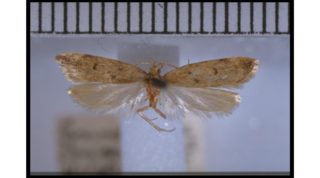
Gymnobathra levigata is a moth of the family Oecophoridae. It was described by Philpott in 1928. It is found in New Zealand.

Gymnobathra callixyla is a moth in the family Oecophoridae first described by Edward Meyrick in 1888. It is endemic to New Zealand.
Rivellia inaequata is a species of signal flies.

Gymnobathra is a genus of moths in the family Oecophoridae. It was first described by Edward Meyrick in 1883. All species are found in New Zealand.
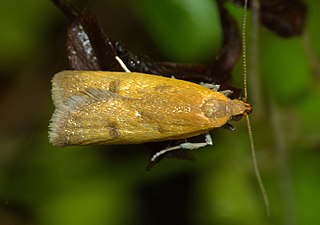
Gymnobathra parca is a moth in the family Oecophoridae first described by Arthur Gardiner Butler in 1877. It is endemic to New Zealand. It has been hypothesised that this species likely belongs to another genus.

Gymnobathra philadelpha is a moth in the family Oecophoridae first described by Edward Meyrick in 1883. It is endemic to New Zealand.
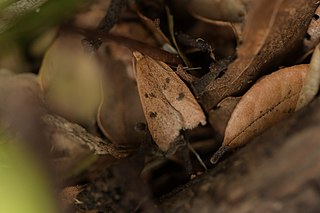
Gymnobathra sarcoxantha is a moth in the family Oecophoridae first described by Edward Meyrick in 1883. It is endemic to New Zealand. It has been hypothesised that this species likely belongs to another genus.

Gymnobathra tholodella is a species of moth in the family Oecophoridae first described by Edward Meyrick in 1883. It is endemic to New Zealand. It has been hypothesised that this species likely belongs to another genus.
















